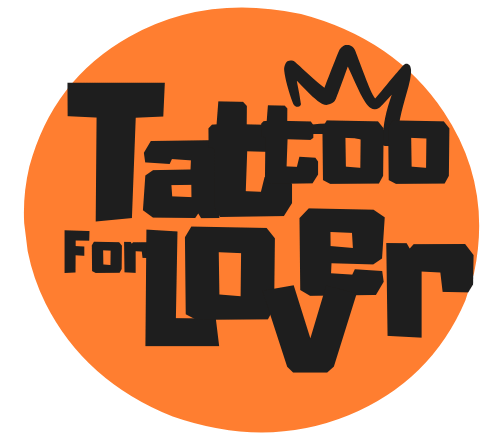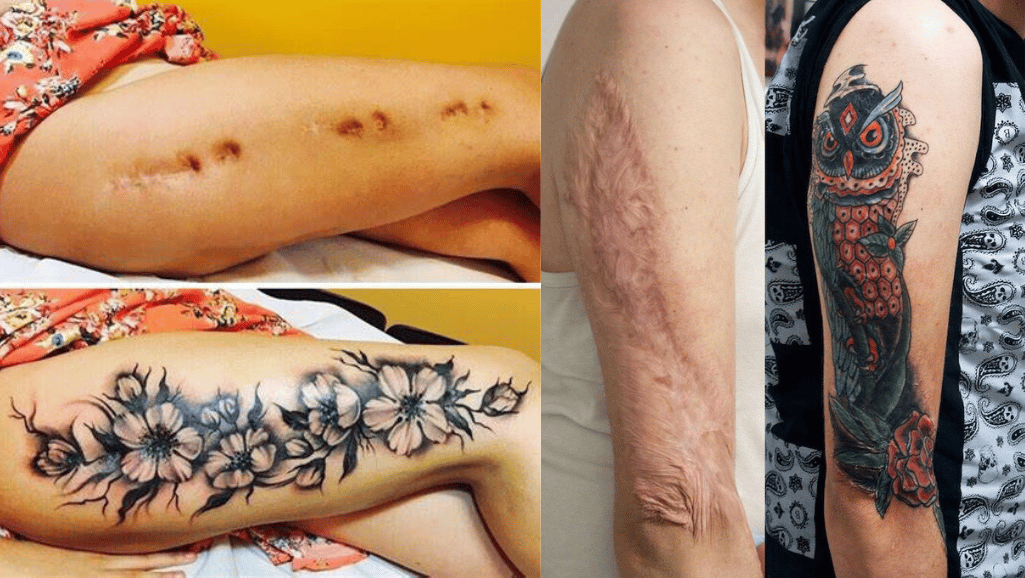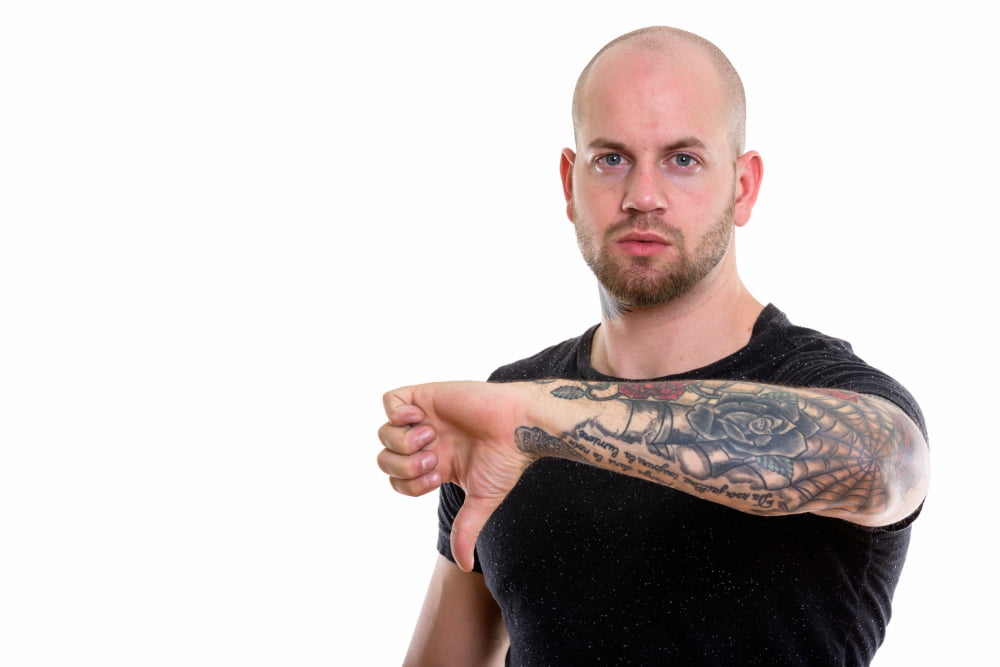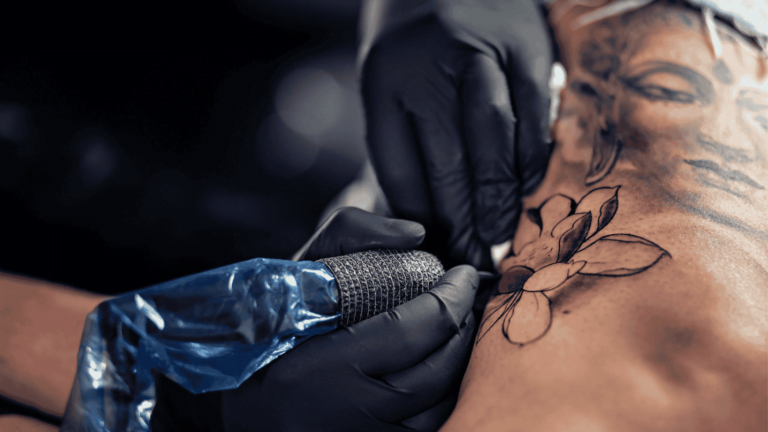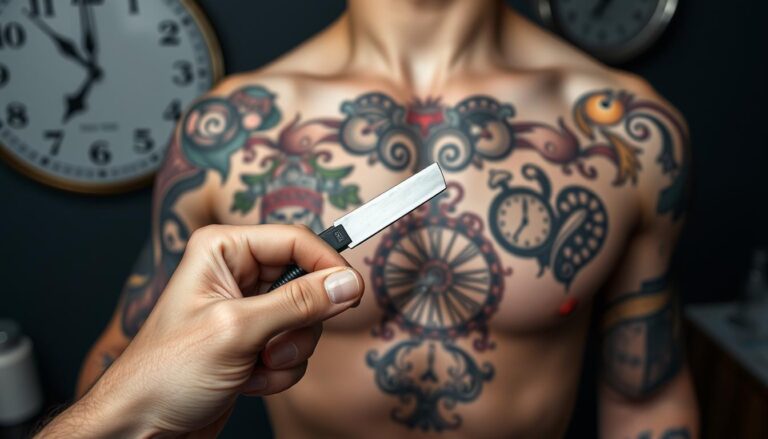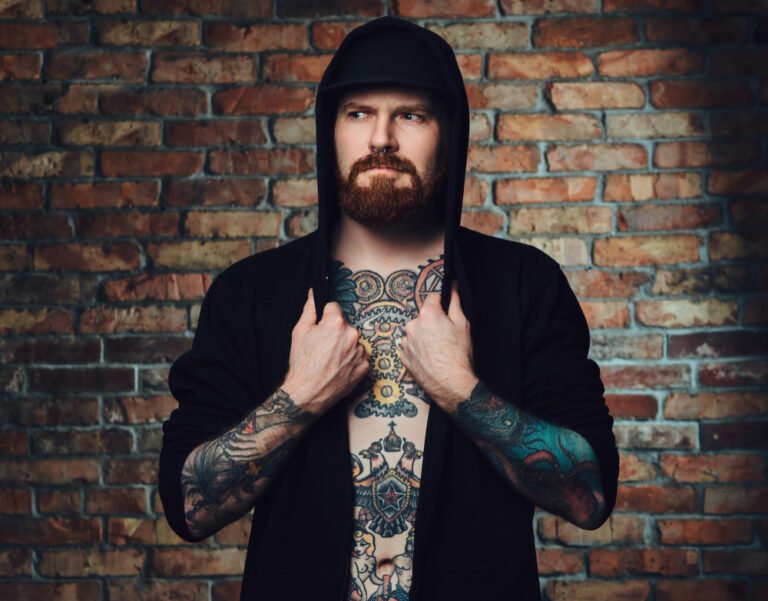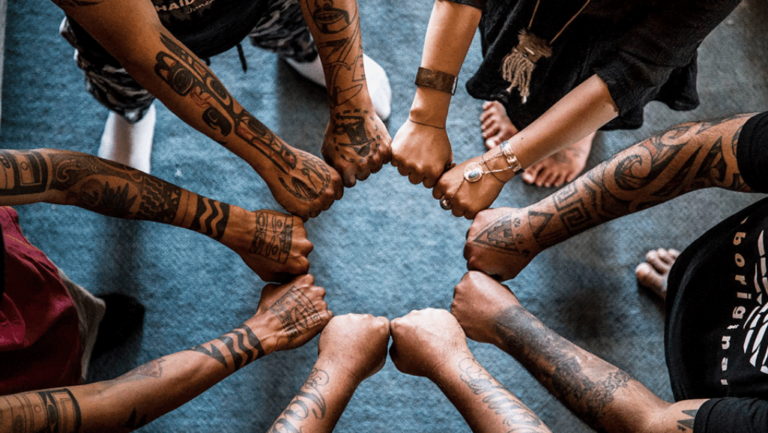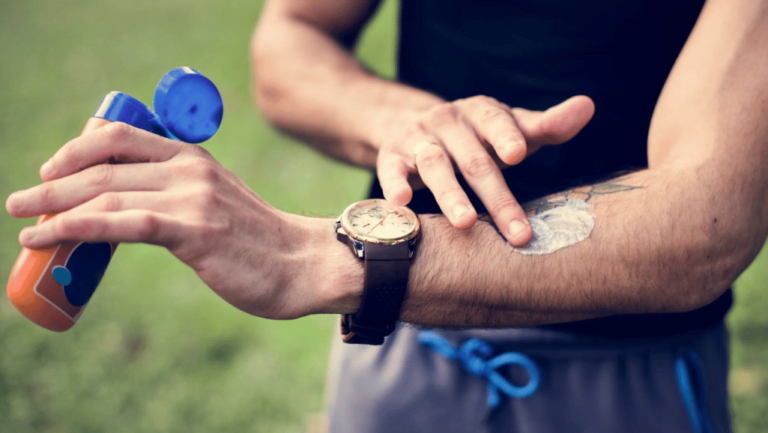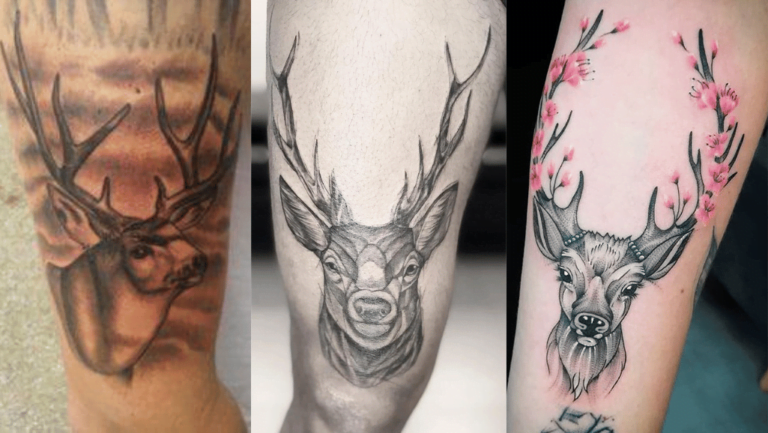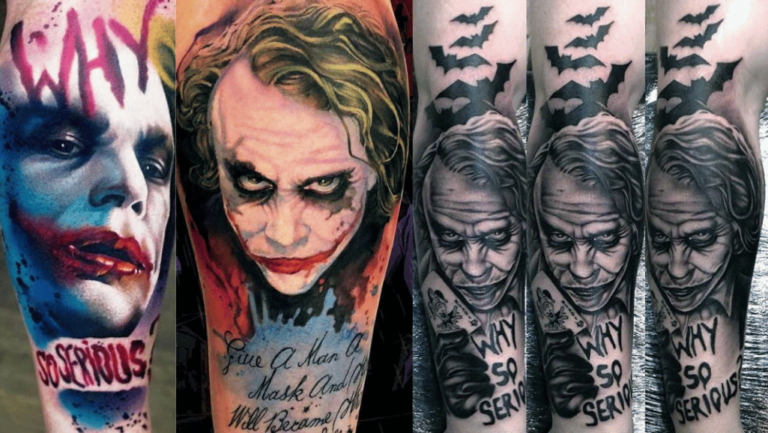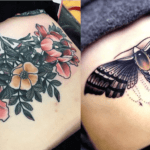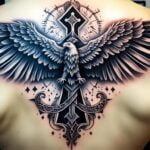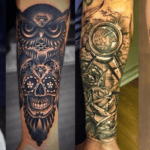Tattooing over scars can be a complex process that requires the expertise of an experienced tattoo artist. Many people choose to cover their scars with tattoos for various reasons, such as improving their appearance or reclaiming their body after a major health issue or surgery. However, it is important to understand that tattooing over scars can be more challenging and painful, especially for certain types of scars like keloid scars, atrophic scars, hypertrophic scars, and burn scars.
While it is possible to Asking can i tattoo over a scar best one, it is crucial to find a reputable tattoo artist who is comfortable working with scar tissue and has experience in scar cover-up tattoos. They will be able to assess the scar and discuss the best approach for achieving the desired results. It is important to have realistic expectations and understand the potential risks, such as the possibility of the tattoo causing more scarring or the ink bleeding or appearing irregular.
To ensure the best outcome, it is advisable to consult with a reputable tattoo artist experienced in scar cover-up tattoos and located nearby for convenience. They can provide guidance on pain management during the healing process and help address any specific considerations related to tattooing scars.
Key Takeaways:
- Tattooing over scars requires the expertise of an experienced tattoo artist.
- Choosing a reputable artist who is comfortable working with scar tissue is crucial.
- Realistic expectations and understanding the potential risks are important.
- Pain management and proper aftercare are essential for a successful outcome.
- Consulting with a nearby tattoo artist experienced in scar cover-up tattoos is recommended.
Types of Scars and Considerations for Tattooing
When it comes to tattooing over scars, different types of scars require different approaches. It’s important to consider the specific characteristics of the scar and consult with a reputable tattoo artist who specializes in scar cover-up tattoos.
Here are some common types of scars and the considerations for tattooing them:
Amputation or Skin-Removal Scars
Tattooing over amputation or skin-removal scars can be relatively easier, as long as the area is not too sensitive. The flat surface makes it more conducive to tattooing. However, it’s crucial to take into account any potential pain or discomfort associated with the scar tissue.
Keloid Scars
Keloid scars are raised and can scar further after a tattoo. In these cases, it may be necessary to only partially cover the keloid scar or incorporate it into the tattoo design. The tattoo artist will need to carefully assess the scar and discuss the best approach to minimize the risk of further scarring.
Burn Scars
Burn scars can have an irregular appearance, making them more challenging to tattoo. However, with careful design, it is possible to help conceal the burn scar. Tattoo artists experienced in scar cover-up tattoos can create designs that effectively camouflage the irregularities of the burn scar.
Stomach Scars
Scars on the stomach, such as stretch marks or those from surgery, can be covered with tattoos. However, it’s important to consider that changes in body shape, such as weight gain or pregnancy, can affect the appearance of the tattoo over time. The tattoo artist will need to take these factors into account when designing the tattoo.
Surgery Scars
Surgery scars are usually precise incisions, which can be minimized by incorporating them into the tattoo design or tattooing over them. The tattoo artist will need to carefully assess the scar and develop a design plan that effectively incorporates the surgical scar into the tattoo.
Remember, the success of tattooing over scars depends on several factors, including the type of scar, its location, and the expertise of the tattoo artist. It is crucial to consult with a reputable and experienced tattoo artist who can offer personalized guidance based on your specific scar and desired outcome.
Pain and Healing Considerations for Tattooing Scars
Tattooing over scars can be more painful than tattooing over unscarred skin. Scar tissue is generally more sensitive and can cause discomfort during the tattooing process. Additionally, fresher scars may be more painful than older scars. It is important to be prepared for the potential pain that may come with tattooing over scars.
During the tattooing process, it is common for the scarred area to experience redness or appear raised. However, these effects should subside within a day or so. It is crucial to closely follow the aftercare instructions provided by the tattoo artist to ensure proper healing and minimize any potential complications or discomfort.
Healing issues, such as blowouts or irregular healing, may be more likely with scar tissue. This is why it is vital to choose a tattoo artist who is experienced in scar cover-up tattoos and can provide the necessary expertise and guidance throughout the healing process.
If you are considering a tattoo over a scar, it is advisable to find a tattoo artist located nearby for convenience. This way, you can easily access the artist for follow-up appointments, consultations, and any necessary touch-ups.
Remember, the healing process for tattooing over scars may be slightly different from that of tattooing on unscarred skin. It is essential to be patient and take extra care to ensure the best possible outcome.
Expectations and Tips for Getting a Tattoo Over a Scar
When considering getting a tattoo over a scar, it’s important to have realistic expectations and understand that the process may differ from tattooing unscarred skin. Here are some tips to help you navigate this unique experience:
1. Consult with an Experienced Tattoo Artist
Choose a tattoo artist who specializes in scar cover-up tattoos. Their expertise in working with scar tissue can make a significant difference in the outcome of your tattoo. A skilled artist will be able to assess the scar and discuss design options that work best for the scarred area.
2. Discuss Your Expectations
During your consultation, it’s essential to have open and honest communication with your tattoo artist. Express your expectations and desired outcome for the tattoo. Keep in mind that not all scars can be completely covered or concealed, but many people choose to incorporate their scars into the design or draw attention away from them.
3. Multiple Sessions or Touch-ups
Tattooing over scars may require multiple sessions or touch-ups to achieve the desired result. Scar tissue can be more challenging to work with compared to regular skin, so it’s important to be patient and understand that the process may take more time.
4. Consider the Pain Level
Tattooing over scar tissue can be more painful than tattooing over unscarred skin. Scar tissue is generally more sensitive, and the tattooing process can cause discomfort. It’s essential to discuss pain management options with your tattoo artist and follow their recommended aftercare instructions to ensure proper healing.
5. Embrace the Unique Beauty
Not all scars can be completely covered, and that’s okay. Many people choose to embrace their scars and incorporate them into the tattoo design. Whether it’s through clever placement or creative patterns, your tattoo artist can help create a design that celebrates your unique journey and story.
Remember, finding a competent and experienced tattoo artist is crucial to achieving the best results when tattooing over scars. By managing expectations and collaborating closely with your artist, you can create a meaningful and beautiful tattoo that transforms your scars into art.
Conclusion
Tattooing over scars is a possibility for those looking to improve aesthetics or reclaim their bodies after surgery or major health issues. However, it is crucial to approach this process with care and seek the expertise of an experienced tattoo artist. Tattooing over scars can present challenges, and it is important to manage expectations and understand the potential risks involved.
When considering tattooing over a scar, it is essential to find a reputable tattoo artist who specializes in scar cover-up tattoos. This ensures that you receive the best possible outcome and minimize the risk of further scarring or irregularities. Conduct thorough research and seek recommendations to find a tattoo artist nearby who has the necessary expertise.
Remember, tattooing over scars may be more painful than tattooing over unscarred skin. It is vital to understand the healing process and follow the aftercare instructions provided by your tattoo artist. By approaching the process with realistic expectations, finding the best tattoo artist, and taking proper care of your tattoo post-procedure, you are on your way to achieve the best results for your scar cover-up tattoo.
FAQ
Can i tattoo over a scar best one?
Can a tattoo completely cover a scar?
Is tattooing over scars more painful?
What types of scars are more challenging to tattoo?
How long does it take to heal after tattooing over a scar?
How can I find a reputable tattoo artist experienced in scar cover-up tattoos?
What should I expect when getting a tattoo over a scar?
Forhad
Forhad's writing is not just about the artistry of tattoos or the latest trends in the industry; it's an exploration of the deep-rooted connections people have with their tattoos, reflecting personal narratives, cultural histories, and moments of transformation. Through a mix of in-depth features, personal narratives, and insightful analyses, he sheds light on the multifaceted nature of tattooing, revealing the emotional and cultural layers that lie beneath the surface.

